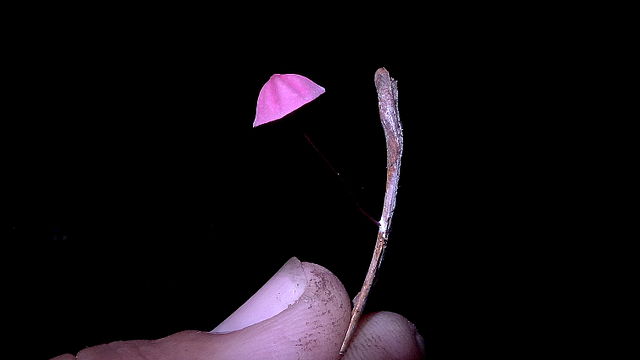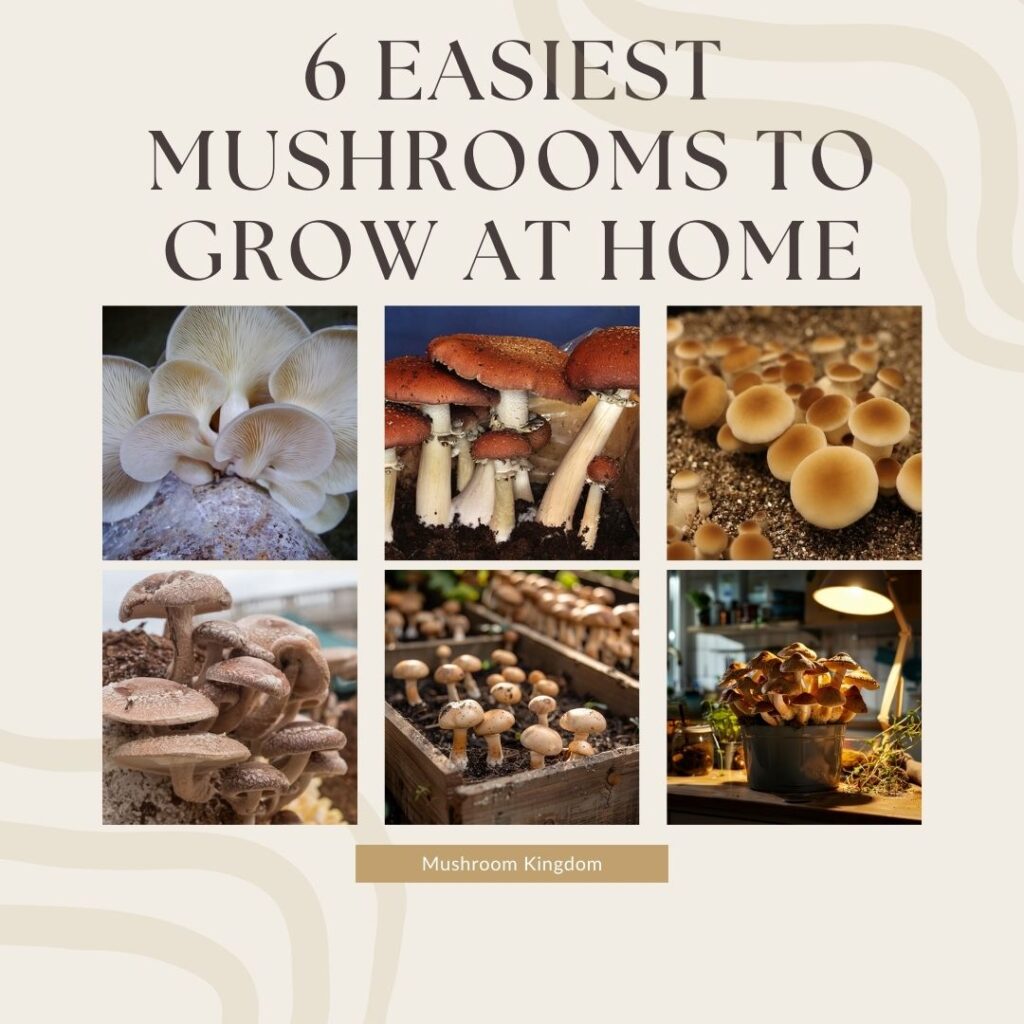Marasmius haematocephalus is a small, vibrant mushroom distinguished by its bright red cap and slender reddish-brown stem, commonly found in tropical and subtropical regions growing on decaying plant material.

Identifying Marasmius Haematocephalus
To accurately identify this species, you need to carefully observe several key characteristics related to its cap, gills, stem, habitat, and spore print.
Cap (Pileus)
Start with examining the cap. When young, the cap is a vibrant, eye-catching red, often drawing attention against the forest floor’s muted tones.
As the mushroom matures, the cap’s color may fade to an orange or yellowish-red. Initially, it is conical or bell-shaped, gradually flattening out as it ages, sometimes featuring a slight central bump known as an umbo.
The surface of the cap is smooth and dry, though it can become slightly translucent and show faint radial lines when wet.

The edges, or margin, are typically striate, displaying fine grooves especially noticeable in damp conditions. The cap’s diameter usually ranges from 1 to 3 centimeters.
Gills (Lamellae)
Moving on to the gills, these are white to cream in color and may acquire a slight pinkish hue as the mushroom ages. The gills are moderately spaced and either free (not attached to the stem) or narrowly attached.
They are smooth along the edges and can appear slightly wavy. This spacing and attachment help distinguish Marasmius haematocephalus from other small red mushrooms.
Stem (Stipe)
The stem is slender and elongated, typically measuring between 2 and 8 centimeters in length and 1 to 2 millimeters in diameter. It’s often a reddish to brownish hue, darkening towards the base.
The texture of the stem is generally smooth but can be slightly pruinose, covered with a fine, powdery layer.
When you cut or break the stem, you might notice it is hollow. Importantly, the stem lacks a ring or volva, structures present in many other mushroom species.
Spore Print
To obtain a spore print, place the mushroom cap with its gills facing down on a white piece of paper for several hours or overnight.
The resulting spore print will be white. This step is crucial for confirming the identity of Marasmius haematocephalus, as spore color can differentiate between similar species.
Habitat and Ecology
Marasmius haematocephalus is saprotrophic, meaning it feeds on decaying plant material. Look for it growing on leaf litter, twigs, or decomposing wood in humid, shaded environments, often in tropical and subtropical forests.
These mushrooms usually appear during rainy seasons or in areas with consistently high humidity, flourishing in the rich organic matter on the forest floor.
Steps to Identify Mauve parachute
- Locate and Collect: Search for the mushrooms in suitable environments like forest floors with plenty of leaf litter or decaying wood. They are often found in clusters.
- Examine Cap Characteristics: Observe the color, shape, and texture of the cap, noting changes as the mushroom matures.
- Check the Gills: Look at the attachment, spacing, and color of the gills to see if they match the described characteristics.
- Inspect the Stem: Consider the color, length, thickness, and whether the stem is hollow and smooth.
- Obtain a Spore Print: Collect a spore print to confirm the white color.
- Microscopic Examination: If possible, look at spores and other microscopic details under a microscope.
- Consult Resources: Compare your findings with mushroom identification guides or seek advice from a mycologist.
Is Marasmius haematocephalus Edible?
Red-capped Marasmius, is not typically considered edible. While is not known to be toxic, it is also not widely consumed for several reasons.
The mushrooms are small, with caps usually only 1–3 cm in diameter. This small size makes them impractical for culinary use, as you would need to collect a significant number to make a substantial dish.

Next, they do not possess a distinct flavor or texture that would make them desirable in cooking. Mushrooms often valued for their culinary properties tend to have a meaty texture or a unique flavor profile, which Marasmius haematocephalus lacks.
Lastly, the nutritional contribution of such small fungi is minimal, which further reduces their appeal as a food source.
Etymology
The name combines elements from Greek and Latin, reflecting both the physical attributes of the mushroom and the scientific tradition of naming organisms.
Genus: Marasmius
- Origin: The term “Marasmius” comes from the Greek word “marasmos” (μαρασμός), which means “withering” or “drying up.”
- Context: This name highlights a notable feature of mushrooms in the Marasmius genus. These fungi have the ability to revive after drying out if rehydrated, a unique trait among mushrooms. This resilience to desiccation allows them to survive and thrive in fluctuating environmental conditions.
Species: haematocephalus
- Origin: The species name “haematocephalus” derives from two Greek words:
- “Haima” (αἷμα), meaning “blood.”
- “Kephalos” (κεφαλός), meaning “head.”
This combination directly refers to the cap’s striking red color, which resembles the color of blood. The term “head” or “cephalus” signifies the cap of the mushroom, thus “blood-headed” aptly describes the red cap.
Naming Context and Scientific Tradition
Scientific names in mycology often blend descriptive aspects of the organism with traditional linguistic elements. The name Marasmius haematocephalus is no exception.
- Descriptive Power: The genus name “Marasmius” conveys the resilience and adaptive capabilities of these mushrooms, especially their ability to withstand dry conditions and recover when moisture returns.
- Visual Cue: The species name “haematocephalus” vividly captures the mushroom’s appearance, guiding those familiar with the language to recognize the red cap characteristic.


